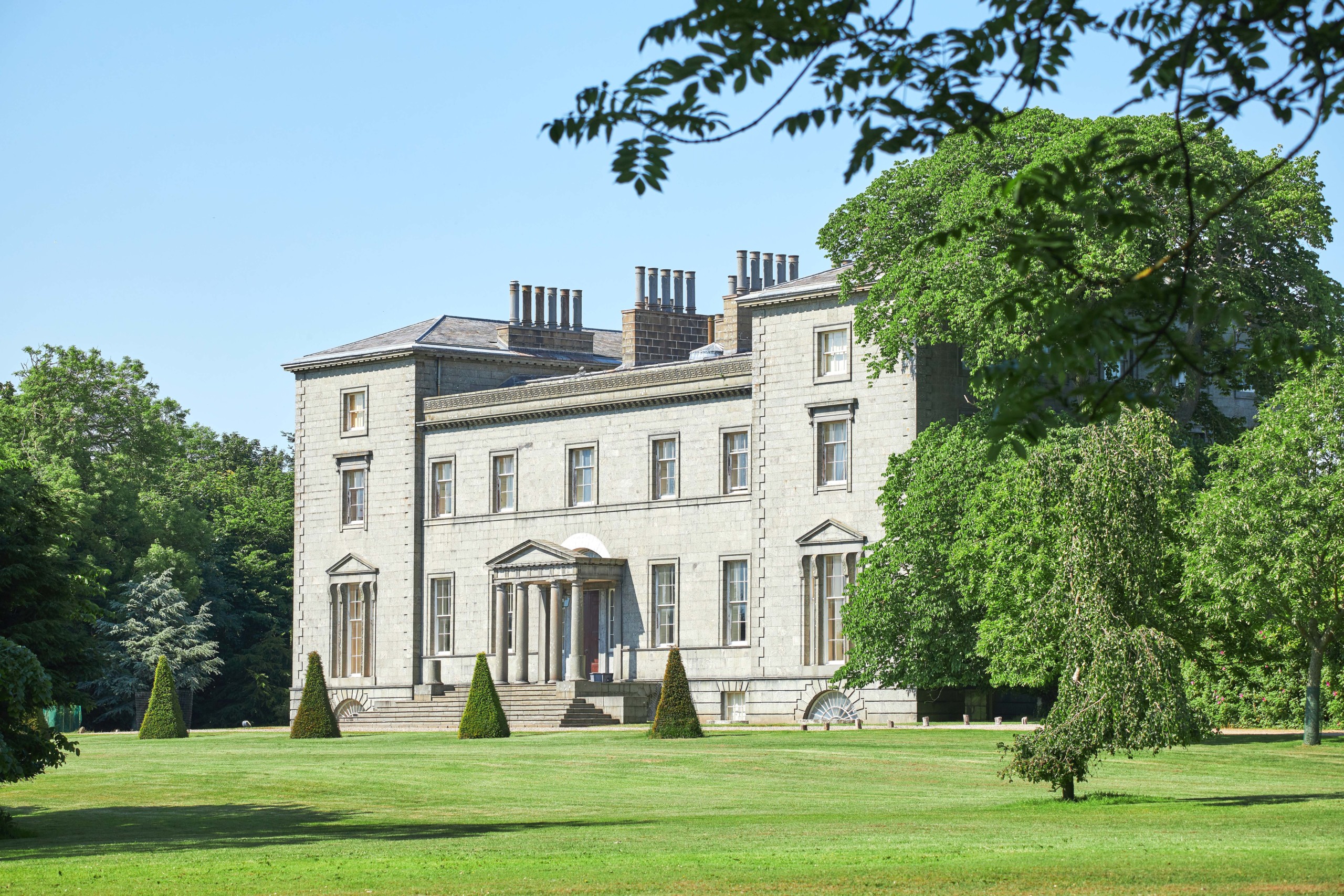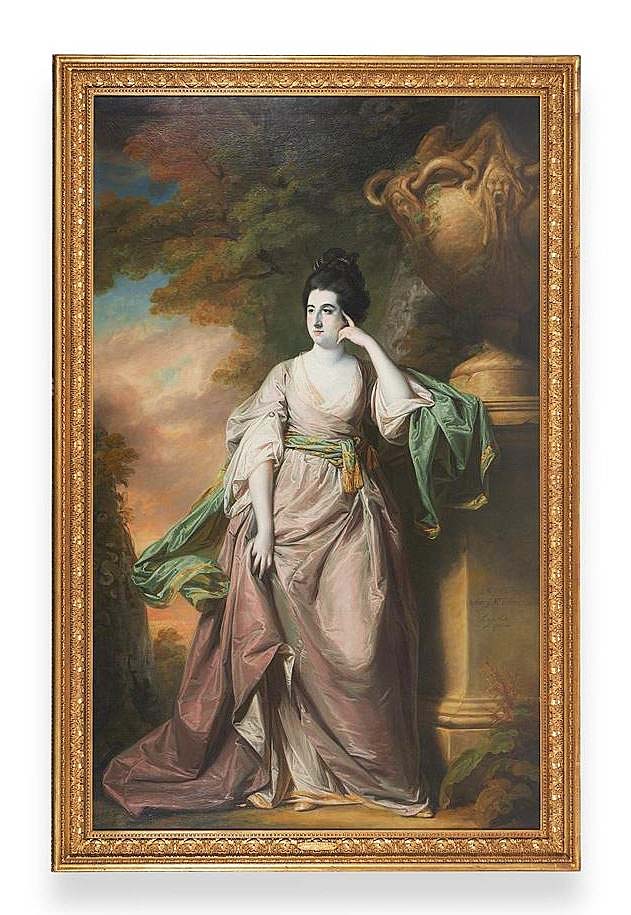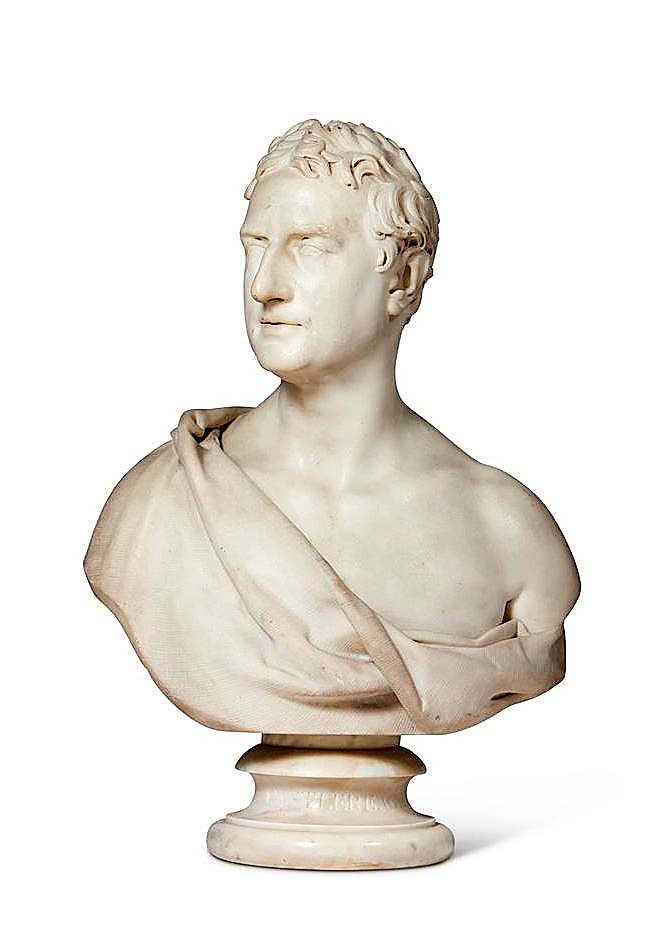
Photo courtesy and copyright Dreweatts.
When a press release announcing that British auction house Dreweatts was going to be handling the collection of Scottish stately home Cairness House on January 31, our interest was piqued. Antiques and The Arts Weekly reached out to Joe Robinson, who has been with Dreweatts for six years and their head of department for House Sales and Private Collections since 2020. He graciously shared some behind-the-scenes insights into the sale.
Congratulations on landing the Cairness House collection for sale at Dreweatts! For our readers who aren’t intimately familiar with the house, can you give us a brief synopsis of its role and significance in Scottish history?
Cairness House is an unforgettable, rather severe but also impossibly romantic house. It is largely unknown and off the beaten track for the seasoned Country House hunter, despite its architectural legacy. It represents the finest work of the Scottish architect, James Playfair, who is best known for many of the buildings of Edinburgh’s New Town, and it is unquestionably one of the purest examples of Grecian Neoclassical architecture in the British Isles making it a landmark in the history of Neoclassicism in Scotland.
Designed in 1793, its Egyptian Room was the first of its kind in Britain; the style would later catch on in houses such as The Duke of Richmond’s Goodwood House. Intriguingly it is also a “calendar house,” where the quantities and elements of its design reflect the days, months and weeks of the year, seasons, etc. Its ground plan displays an adjoining “C” and “H,” for Cairness House.
Despite years of decline in the late Twentieth Century, it was saved and painstakingly restored, once more awaking its interiors back to their former glory.

Cairness House in Buchan, Aberdeenshire. Photo courtesy and copyright Dreweatts.
I’m sure most if not all of these historic houses are unique or interesting in their own right, but does Cairness House stand out for specific reasons?
Cairness stands out for me in two ways, both involving scale. Firstly, its purity and concentration of Neoclassical architectural detail. It really is a tour de force for Neoclassicism in Scotland and the United Kingdom. And secondly, the scale of academic rigor, vision and design flare required to undertake such a restoration and bring together a collection which both feels authentic to the house’s history and legacy as well as a comfortable family home.
What are some of the highlights of the sale?
Francis Cotes’ portrait of Mrs William Colhoun of Wrentham, Norfolk, is a swagger portrait to rival that of any by Sir Joshua Reynolds. It has the best possible scale to create a center piece for any interior, be it on an equally proportioned wall or to achieve the floor to ceiling “full look.” If you want to add swagger to your collection without the Reynolds price tag, this is certainly something to consider! Francis Cotes, was one of the most fashionable portrait painters in London during the third-quarter of the Eighteenth Century and, at the time this portrait was painted in 1768, Cotes was at the apex of his artistic achievement. The dynamism in the composition, created by the way the artist has captured the movement of the silk in the dress but also the light breeze on the shawl makes for a semi-heroic or goddess-like depiction. For a portrait of its inherent quality and style it also has an impeccable provenance trail, which in many cases is hard to trace.
Sir Thomas Lawrence’s Portrait of HRH Prince Frederick Augustus, Duke of York is what we call a bravura portrait commissioned by the sitter, in about 1801. It was painted in an age when power and ego were expressed through military prowess and the paint brush. Sir Thomas Lawrence was the most fashionable and also the greatest portraitist of his generation, not only in Britain but also across Europe where tsars and popes sat for him. He was made Principal Painter to George III in 1792 after Sir Joshua Reynolds’s death. After 1814 he received a slew of commissions by Prince Frederick’s brother, George IV, culminating in The Waterloo Chamber at Windsor Castle. While those at Windsor depict various princes and generals in military uniform, this portrait is somewhat more intimate but not less enigmatic.
One of the sculptural highlights would have to be a carved marble bust of Lord Castlereagh, Second Marquess of Londonderry, which was carved in 1828 by Sir Francis Chantrey, whose most notable works include the statues of King George IV in Trafalgar Square; King George III at the Guildhall, and George Washington in the Massachusetts State House. It is one of the first group of busts depicting Western European worthy politicians, writers and royalty represented in the heroic Classical manner inspired by representation of scholars and philosophers from classical antiquity.
To have a bust by Chantrey, of such a notable politician, come to the market which was possibly produced for a former British Prime Minster, Sir Robert Peel, with its impeccable and traceable provenance to the ownership of the sitter’s family is rare.
Lord Castlereagh, as the subject was known, had a prolific political career and held many senior government positions. As Foreign Secretary, he was instrumental in bringing about an end to slavery. William Wilberforce, himself, allowed that Castlereagh had secured all that “could be done” to enable the abolition of Atlantic slave trade.

Portrait of Mrs William Colhoun (“Colquhoun”) of Wrentham, Norfolk by Francis Cotes (British, 1726-1770), oil on canvas, signed, inscribed and dated “Mrs Colquhoun, mother of Mrs Coke px 1768” (lower right), 93 by 56¼ inches. Photo courtesy and copyright Dreweatts.
Do you have a particularly favorite item in the sale? And why does that item resonate with you so much?
Being in the profession I am in, I try not to have favorites as inevitably you have to wave goodbye to them. However…sometimes it is hard not to…
In this sale for me it is James Arden Grant’s “Portrait of the Artist’s Wife Ann Grant.” It is a captivating image. James Arden Grant has captured the sitter’s youthful arrogance perfectly and its informal brushstrokes makes for an almost iconic poster worthy image depicting a figure expressing the style and aristocratic endeavors of her time.
As the head of house sales and private collections for Dreweatts, what are some of the other private collections and/or house sales you’ve had the pleasure of overseeing?
I am privileged to have handled a number of private collections for a wide range of clients. Some more whimsical such as the collection at Aynhoe Park (2021), some more historically important such as the collection of 3rd Baron Wraxall (2018) and the Sitwell Family’s collection (2021) and some which have an important design legacy such as Oliver Messel’s Flaxley Abbey (2022), Christopher Gibb’s Chilham Castle (2022) and the personal collection of the late Robert Kime (2023). All bring new dimensions to my work and new opportunities to learn.
Are there particular items from any of those collections that stand out in your memory?
There are too many items which stand out both for the narrative they told and the result they achieved. These range from a flying taxidermy giraffe, coronation peer robes and coronets to an amazingly rare ottoman atlas, Edith Sitwell’s address book and a Tiepolo! The latter were all found in attics!
A particular favorite of mine, which I now have on my wall at home, is a sword given by George IV to his friend General John Hely-Hutchinson, 2nd Earl of Donoughmore, the man who seized the Rosetta stone from the French during the siege of Alexandria. Again this was found in an attic. (I like to try to buy something from each sale I am involved in).
When you begin to appreciate how objects can express a historic narrative, be it on a national, international or familial level, it is really quite hard to not be captivated by the possibilities which are unleashed by research and contextual understanding. It is always then exciting to see how the narratives you present to the market, whether it be in a catalog or how you exhibit them, engage the collector audience.

Carved marble bust of Lord Castlereagh, Second Marquess of Londonderry by Sir Francis Chantrey (1781-1841), dated 1828, signed and dated “Chantrey, SC. 1828. Lord Castlereagh 1821.” to reverse, on a circular marble socle inscribed “Castlereagh,” 29½ inches high. Photo courtesy and copyright Dreweatts.
Can you tell us a bit more about your passion for country houses (where and when did it start?) and how it has led you to your current role today?
I have always had an interest in country houses. As I child I was the annoying one on days out with friends who preferred to explore these beautiful places rather than play in the adjoining adventure playpark. As corny as it may sound, the adventure really was guiding myself around rooms with paintings and works of art which were awe-inspiring, despite at that stage being relatively naïve about them.
Attics and cellars are also the perfect playground!
Having read history at university, where my guiding interest in “grand history” (meaning big events, military leaders, Kings and Queens, etc) was fostered, I began to understand how country houses are places which represent many of our national narratives as well as key melting-pots of artists and artisans who are the bedrock of “culture” as we know it. All are unique in terms of what they have to show. They are places which hold within them the objects which tell the stories, have influenced events and are a window into the personalities of the people who collected them. Perhaps controversially, in my opinion the taste of the grand-tour collector has a longevity which outshines the triviality and short term “fashionable” nature of most modern art.
Therefore, while the dispersal of historic collections may sound like an ironic career path, as it is of course sad to see 300 years of family history sold off to the highest bidder, however, I do see it as my responsibility to ensure the collections I work with are properly documented and presented within a catalog which will act as a lasting record. With the dispersal of one collection comes the creation of another!
Does Dreweatts have other noteworthy House Sales or Private Collections scheduled for 2024?
We do indeed have some fascinating collections coming up for the 2024 season, however they have not yet been publicly announced so it is certainly worth your readers keeping an eye on our Instagram and website for updates.
—Madelia Hickman Ring
[Editor’s note: For information on the Cairness House sale, which will be sold alongside a historic townhouse on Wimpole Street, see www.dreweatts.com or follow them on Instagram (@dreweatts1759).]




